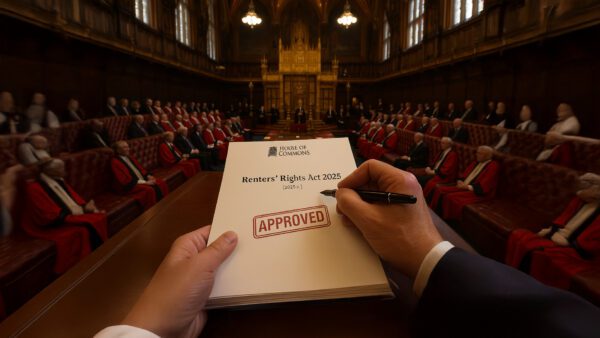The next wave of British growth will not come from new products but from new jurisdictions. For UK brands, India represents a paradox: a market of unmatched scale, yet a legal environment that penalises haste. The challenge is not entry but execution, how to transplant a UK governance framework into a jurisdiction defined by procedural intensity, overlapping regulators, and rapid digitalisation. The firms that succeed will treat legal architecture as commercial strategy, not compliance cost.
I. The strategic context: post Brexit bilateralism
The UK’s trade policy now leans on bilateral corridors. The UK and India Free Trade Agreement, signed in July 2025 but pending ratification, will eventually set a template for services mobility, data standards, and cross border taxation. For now, entry into India still depends on sector specific foreign investment rules, the Companies Act 2013, and FEMA’s capital control regime. British boards must therefore approach India not through the lens of emerging market risk but as a rules-based jurisdiction where legal form is commercial advantage.
India’s legal environment is moving closer to the UK’s. Corporate filings are digital, directors are identifiable through national KYC systems, and enforcement is increasingly data driven. This convergence allows UK brands to operate in a familiar governance ecosystem, but only if they maintain structural precision from the start.
II. Structuring with discipline: law as market entry strategy
The fundamental decision is the choice of legal vehicle. A wholly owned subsidiary remains the most robust model for brand protection, tax efficiency, and repatriation. It allows control over intellectual property, consistent transfer pricing arrangements, and eligibility for India’s 22% corporate tax rate under section 115BAA.
UK counsel should treat incorporation not as a procedural act but as a constitutional one. Every clause in the Articles of Association should reflect brand control, ownership, and board independence. Shareholder agreements must integrate UK corporate principles such as reserved matters, drag and tag rights, and director duties while remaining enforceable under Indian law. Many entrants rely on informal joint ventures that collapse once regulatory filings or ownership disputes arise.
Franchising and distribution models often appear simpler but create the opposite result: brand dilution, tax leakage through mischaracterised royalties, and unmanageable consumer liabilities. In the post Finance Act 2023 landscape, where India taxes royalties and technical fees at 20% subject to treaty relief, these structures can erode margins faster than any logistics cost.
III. Building people infrastructure: compliant mobility as competitive advantage
India’s demographics are an asset, but mobility rules are unforgiving. Without a social security agreement between the UK and India, every British assignee becomes liable to India’s Employees Provident Fund regime with a 12% contribution on full pay. Employment visas require a minimum salary of USD 25,000 and registration with the Foreigners Regional Registration Office.
Secondments must be drafted with precision. The Supreme Court’s Northern Operating Systems judgment classifies many inbound secondments as taxable manpower supply, creating GST and permanent establishment exposure. The best structures use dual contracts, Indian employment for operational control and UK employment for benefits continuity, and treat tax equalisation as an upfront budgeting exercise rather than a remedial cost.
UK brands should pre-empt mobility issues at the group policy level. Expatriate frameworks must reconcile UK employment protections, Indian payroll tax, and corporate residence tests. Compliance here directly influences profitability. A clean mobility strategy prevents double taxation, reduces payroll friction, and preserves managerial credibility with regulators.
IV. Governance and compliance: synchronising two legal systems
Expansion is now a governance challenge. India’s Significant Beneficial Ownership rules mirror the UK’s register of persons with significant control. Both demand transparency of ownership above 10%. Directors must complete identity verification under both the UK Companies House reforms effective November 2025 and India’s DIN based KYC systems. Boards that harmonise filings and maintain mirrored registers across jurisdictions avoid anti money laundering discrepancies that can stall banking or licensing.
Anti bribery procedures under the UK Bribery Act 2010 must extend into India’s procurement and state licensing framework. India’s Prevention of Corruption Act now penalises commercial bribery, and enforcement collaboration between agencies is increasing. Embedding adequate procedures into Indian operations is both lawful protection and market signal.
On data, the Digital Personal Data Protection Act 2023 introduces accountability similar to GDPR, while India’s CERT In requires incident reporting within 6 hours. UK brands must treat these as operational metrics. The UK Information Commissioner’s 72 hour window is no defence in India. Integrating incident response across both jurisdictions, using standardised encryption, retention, and audit trail protocols, turns compliance into reputational capital.
V. Profitability through legal precision
The primary cost of entry is regulatory friction. Every delay in registration, taxation, or data clearance converts into working capital loss. A structure that anticipates both UK and Indian compliance regimes delivers margins.
Key profitability levers are legal, not operational:
- Repatriation clarity through the India and UK tax treaty, using Form 10F and tax residence certificates to secure 10–15% withholding instead of 20%.
- Transfer pricing coherence using contemporaneous benchmarking under both OECD and Indian rules to prevent double adjustment.
- Data localisation avoidance by maintaining processing within permissible geographies and evidencing lawful transfer safeguards.
- Permanent establishment neutrality through contracts that keep control, risk, and remuneration within the Indian entity.
These factors define whether a UK patent records profits in London or defers them indefinitely in India.
VI. The advisory opportunity
Law firms and professional advisers now play a central role in translating UK governance standards into Indian enforceability. The task is multidisciplinary, combining immigration law, tax structuring, data compliance, and corporate governance. The real value lies in coordination, ensuring that the same narrative is defensible before the UK’s HMRC, Companies House, as before India’s Ministry of Corporate Affairs, Reserve Bank, and tax authorities.
For UK legal counsel, assisting brands to enter India requires a shift in mindset. India is not an exotic risk but a mirror market that demands British rigour in a different idiom. Advisory quality is measured by structural resilience, not volume of filings.
VII. The new tradecraft of expansion
The post Brexit British economy will depend on legal engineers as much as marketers. The India corridor is the proving ground. Brands that move first with coherent legal structures, clean shareholding, local governance, mobility compliance, and integrated data strategy will not only survive but set the benchmark for international expansion.
In an age where regulation defines market access, legality is brand strategy. The firms that internalise this will discover that compliance is not an obstacle to growth in India, it is the mechanism through which growth becomes sustainable.









